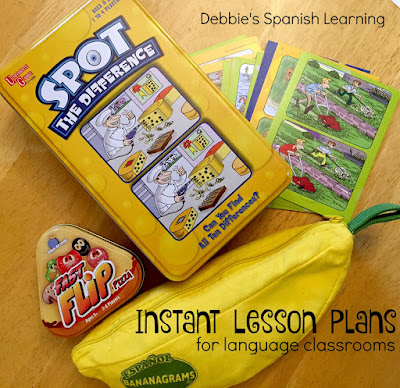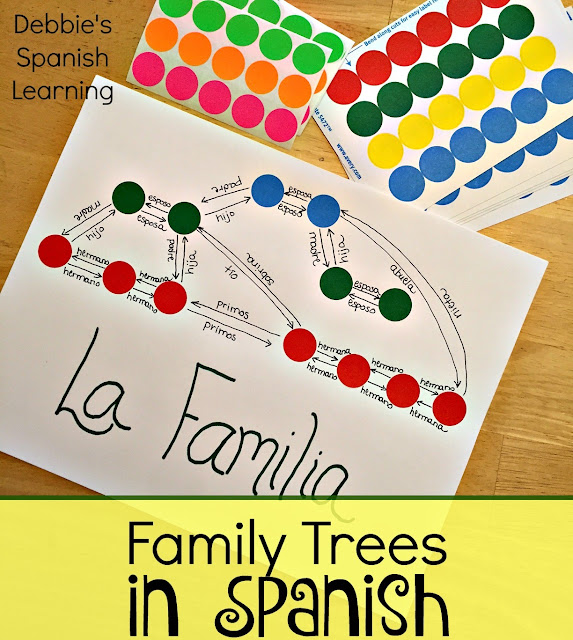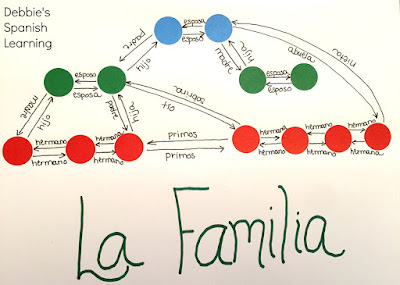{Affiliate Links Used.}
Let's face it. While teaching can be incredibly rewarding, it is also draining emotionally and physically (especially when you are sick). There are times when I really struggle to get through a teaching day. While I don't teach in a regular classroom (I give private and small group lessons), I still struggle from time to time to get through a lesson. Recently, I decided that I needed a master list of easy activities I could do with students when...
- I'm not feeling well.
- They have a make-up lesson.
- We have a game day at the end of the semester.
I prefer not to waste precious time with my students with activities that don't further their language learning, and yet there are days when we need to step back and do something different. I was also realizing that coming up with ideas when I'm pressed for time or feeling ill wasn't working for me. I needed a ready-to-go list I could just pull out. So on a quiet afternoon, I did some brainstorming of all the activities my students have been exposed to that we could do on a game day or a day when I'm sick. (Or if you are teaching in a regular school...a day when you need a sub). I created a file and then printed out several copies to have on hand. I teach a big age range (age five through high school) and a myriad of ability levels. So it is easier for me to have a master list and circle the activities we are going to do based on the ages of the students and their abilities. It becomes my instant lesson plan.
If you are teaching larger groups, you may need to break students into groups and have "stations" where they move from activity to activity during the class. That way no one gets bored and all the teacher has to do is monitor the groups.
Here's some of what is on my list with links to see how it's all done. However, since every teacher is different it would be ideal for you to come up with your own list of activities that work in your classroom.
- KLOO- I love this game (and my students do as well) because it really gets them creating the language. You can buy the board game version or just the deck of cards (There are four different decks in the Spanish version). This game come in Spanish, French, Italian, and even English for ESL learners.
- Guess Where House Game- A guessing game that uses family members and house vocabulary.
- Spot the Difference Cards- Can students talk about the differences in these cards in the target language?
- Spot It!- Fast-moving card game that can be done in any target language.
- Caramba- This is currently the top post on my blog. My students LOVE this vocabulary review game! It's easy to make it yourself and have on hand.
- Fast Flip Games-You can read about this game halfway down this post. A fast-paced game for reviewing foods. There's the fruit version and a pizza version. Yum!
- Mano Nerviosa-I started using this game this past school year and my students beg for it. Done in the target language with two decks of regular cards. Here's how to play.
- Secret Square- A simple game that uses any picture cards with vocabulary your students have worked with.
- Bananagrams-See this post for ideas on how to use Bananagrams with your students. You will need to get the right version of this game for the language you teach. Here's the Spanish version. And the French one.
- Card Talkers is a simple activity using a Spanish deck of cards and questions. I have four printables on my blog to use with the cards. You can find the links to all of them in this post. NOTE: This activity is better suited to older kids and high schoolers.
- Drawing Activities (this is for the whole group to do together.)- A plethora of drawing activites along with the printables to do them. These are definitely listening exercises for your students. You can find them here.
- Memory and Go Fish- If you have pictures cards (two of the same picture on two different cards) you can play a whole bunch of different games with them. Take a look at this post.












